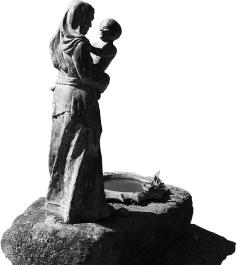Maundy Thursday
18 April 2019
With the celebration of the Sacred Triduum, we arrive at the climax of the Church’s liturgical life. To the events commemorated and relived during these days, we can trace the very foundations of all that we hold to be true and sacred. Indeed, it all came about quite unexpectedly. The tragic denouement of Our Lord’s life gained momentum and speed in those final weeks. To all appearances, the brilliant career of the wonder-worker of Nazareth came to an abrupt and disastrous end. He was rejected by the chief priests and crucified as a blasphemer. Even the apostles did not realise at the time that the events, tragic though they were, were actually the fulfilment of the prophecies according to which the Messiah would be, all at once, Priest, Victim and Altar.
In the Old Testament, the priests took animals and offered them in sacrifice on the altar by shedding their blood as an act of atonement to the Divine Majesty. It was all a prefiguration of the Divine Mission of the Redeemer, for the blood of those animals could only be a symbol of our desire to atone, it was powerless to obtain forgiveness. The only victim pleasing to the Father and capable of wiping out sin, was the Lord Himself, and so he would be the sacrificial lamb destined to offer satisfaction for the sins of the world. The altar would be his own Body. It is on the cross, hanging, bleeding, losing his very life blood, that the Incarnate Lord realises the prophecies, brings them to fulfilment, and offers to God the Father the one and only sacrifice capable of appeasing His wrath and satisfying for sin. That is why, in the New and Eternal Covenant, there is no other sacrifice but that which the Lord offered on the Cross on Calvary.
But God knew that human nature, which He Himself had created, needed a sacrificial act. In reality there can be no true religion without sacrifice offered to God. How was it then possible for Our Lord to both offer the one sacrifice pleasing to the Father, once and for all, and at the same time, bequeath to His Church a real and true sacrifice such as required by human nature? To answer that, let’s read one of the most beautiful and compelling pages of Catholic history, the decree on the Sacrifice of the Mass promulgated by the Council of Trent:
“Forasmuch as, under the former Testament, according to the testimony of the Apostle Paul, there was no perfection, because of the weakness of the Levitical priesthood; there was need, God, the Father of mercies, so ordaining, that another priest should rise, according to the order of Melchisedech, our Lord Jesus Christ, who might consummate, and lead to what is perfect, as many as were to be sanctified. He, therefore, our God and Lord, though He was about to offer Himself once on the altar of the cross unto God the Father, by means of his death, there to operate an eternal redemption; nevertheless, because that His priesthood was not to be extinguished by His death, in the last supper, on the night in which He was betrayed,–that He might leave, to His own beloved Spouse the Church, a visible sacrifice, such as the nature of man requires, whereby that bloody sacrifice, once to be accomplished on the cross, might be represented, and the memory thereof remain even unto the end of the world, and its salutary virtue be applied to the remission of those sins which we daily commit,–declaring Himself constituted a priest for ever, according to the order of Melchisedech, He offered up to God the Father His own body and blood under the species of bread and wine; and, under the symbols of those same things, He delivered (His own body and blood) to be received by His apostles, whom He then constituted priests of the New Testament; and by those words, Do this in commemoration of me, He commanded them and their successors in the priesthood, to offer (them); even as the Catholic Church has always understood and taught.”
This admirable text, written to confound the errors of the Reformers, shows with admirable clarity that, by Divine institution, Our Lord Jesus Christ, on the very night He was betrayed, that is to day, on this night, knowing full well what would ensue the following day, anticipated his bloody sacrifice by instituting the sacramental sacrifice of the Mass, in such a way that whenever a priest, obeying the command of His Lord, pronounces those awesome words of consecration, the very sacrifice of Calvary, in its essence, is made present on the altar. In that way, every generation of the Catholic faithful can come into living contact with the very source of redemption. Calvary is not an event engulfed forever in the past; it is an event transcending time and mystically made present on our altars.
And so, tonight, my dear Friends, as we witness once again the unfathomable love of Our Blessed Saviour, let us open our hearts to Him in profound thanksgiving for such an inestimable treasure which gives us eternal life. Let us renew our fervour and devotion to the Most Blessed Sacrament. Let us resolve never to receive Him unworthily, that is, in the state of mortal sin, and to preclude that from happening, let us make sure we remain close to His eucharistic presence, basking in the eternal light which leads us out of darkness and gives us a share in the very life of God.
On this night, let not Judas, but rather Magdalen and the good thief be our models, both of whom, from enemies of Christ, became close friends and were received into the eternal kingdom. May such be our grace too as we walk with Christ to the Cenacle, from there to Calvary, and from Calvary to the Empty Tomb and so on to the Eternal Passover.


